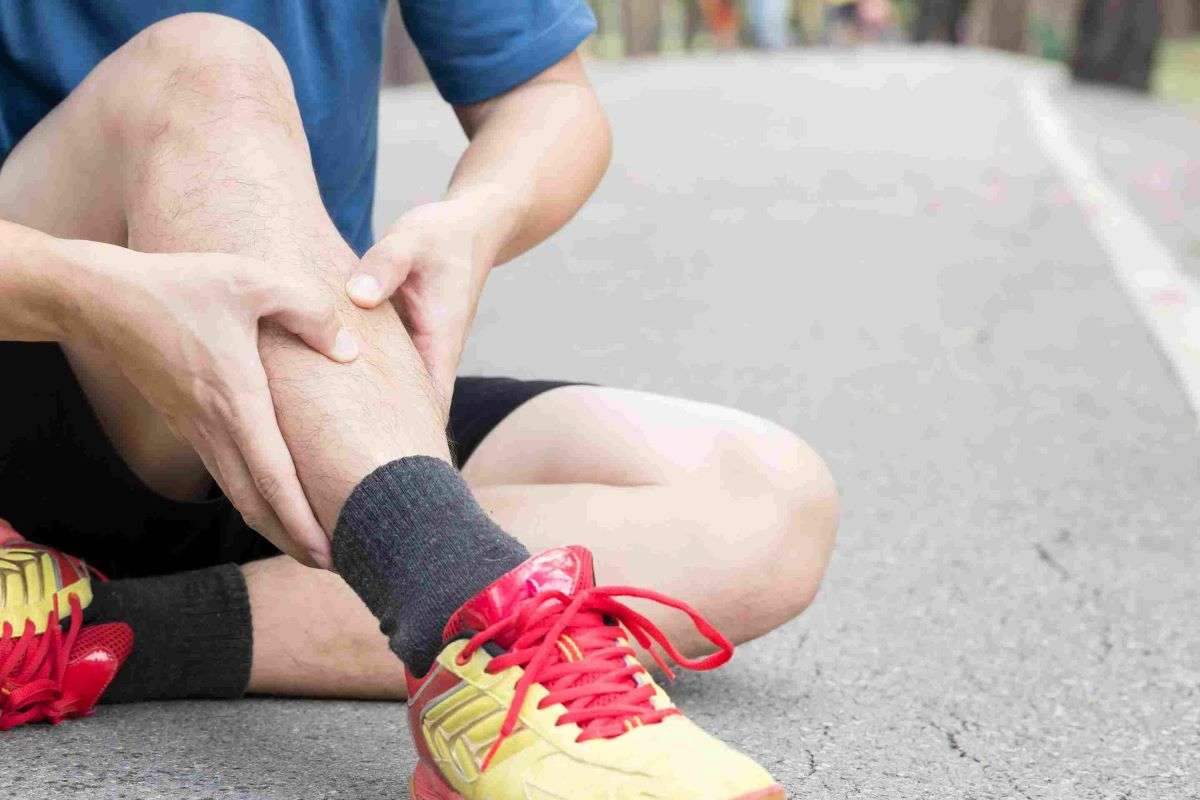Shin splint is a common condition that can affect runners and other athletes who put stress on their legs with activities like sprinting, jumping, or hill climbing. It typically occurs when the muscles, tendons, or other tissues in your legs become inflamed from overuse.
You might feel pain almost anywhere in your shins, but it usually feels worse towards the front of your lower leg. It’s not uncommon for people to feel pain only when they begin exercising again after resting for some time. The common question would be, how do I get rid of shin splints? With the following tips for how to get rid of shin splints, you can ease your pain and prevent them from coming back.
Quick Access
What are shin splints?
First, let’s make sure we understand what shin splints exactly are. When we say “shin splints,” we refer to a cluster of symptoms when your shin muscles become inflamed and strained. This is due to repetitive overuse and excessive stress on the tissues during exercise. The site of pain is usually on the inside of the lower leg and may feel like an achy, burning, or stabbing sensation.
You may notice a noticeable bump or swelling when you press on the affected area. To determine whether you are dealing with shin splints or a different injury, it’s essential to know that shin splints can occur alongside an actual stress fracture. A small percentage of people with shin splints have a stress fracture, a crack in the shinbone. So if shin splints are accompanied by other leg pains, back pain, or knee pain, you should consult your doctor to be safe.
Major causes of shin splints
The leading cause is overuse and doing too much too soon. For example, if you increase your distance or intensity too quickly, you risk shin splints significantly if you don’t warm up properly before you exercise. Regarding athletes, different sports and positions put you at a higher risk of shin splints.
Still, it can happen to anyone who is overusing their shins without giving them enough time to recover. Another major cause of shin splints is simply weak shins. If your shins are not strong enough to handle the demands of your exercise routine, they will become stressed and may become injured. This can be remedied by adding more lower-body strength training to your regime, but it’s essential to start slow and build up your shins’ strength over time.
Shin splint signs and symptoms
A discomfort or dull pain inside the shin that may radiate up toward your knee or ankle is the most typical sign of shin splints. Swelling and redness may also be present. The pain may worsen when you walk upstairs, run, or perform other activities. If you’re experiencing shin splints, you may also feel other symptoms.
You could experience a burning sensation in your shins, feel the pain that travels from your shins up to your knees or ankles, or have tingling sensations in your shins and the bottoms of your feet. You could also experience stiffness or swelling in your shins and fatigue after aerobic activities.
What is the duration of shin splints?
Overuse injuries, such as shin splints can occur. This means you’ve done too much too quickly, which has stressed and injured your shins. Shin splints will usually go away on their own after a few days of rest and ice, but it’s essential to take them seriously and back off your workouts until they subside entirely.
If you don’t treat shin splints early, they could turn into a chronic pain condition. This means that the pain in your shins never really goes away, but it does become more manageable over time. They can help you with a long-term plan to get back to normal. If you have recurrent shin splints, it’s also a good idea to see a sports medicine professional to rule out any underlying conditions.
What happens when shin splints go untreated for long?
If you have shin splints, they can almost certainly be treated with rest, ice, compression, and elevation (RICE). When untreated, the inflammation can spread to your entire lower leg and travel up to your knee. When this happens, it’s called acute inflammation. This means that it’s short-term, with symptoms that last less than a month.
If you notice increased pain, swelling, and redness in your shins, you should consult a doctor to rule out a stress fracture. If you notice that your shin pain has become chronic, you may want to see a sports massage therapist or physical therapist to help guide your treatment plan.
How to get rid of shin splints
First, stop running or doing whatever caused your shin splints in the first place. Now, if you’re experiencing the early symptoms of shin splints, you can do a few things to ease the pain and maybe even prevent it from becoming a natural shin splint. The healing of shin splints from running was covered below:
The RICE method (rest, ice, compression, and elevation) to get rid of shin splints
The best way to get rid of shin splints is RICE. Reduced activity, cooling, compression, and elevation can aid with discomfort and swelling. If you have shin splints and you’ve been resting and icing your shins for a week, but you still have pain, you can try adding a small massage to your treatment. While you can perform a massage on your shins, you don’t want to press too hard.
A sports massage would be better suited for the shins. You should perform a small massage three times daily to get the maximum effect from your treatment. You can also roll lacrosse or softball against your shins. East Asian cultures developed the Rice method. It is a method of treating injuries that involves applying cold compress, rest, compression, and elevation to reduce inflammation.
Warm up and stretch
Warm up for about 10 minutes before exercising, and do light stretches afterward. Because the shins are used to support your whole body’s weight when walking and running, it’s important to warm them up before they have to carry that load.
This can help reduce the risk of shin splints since the tissues around your shin bones are more likely to tear if they’re stiff and cold. Stretching can help relax the muscles and tendons in your shin and reduce their risk of injury. Gentle stretching of the muscles and tendons in your lower legs can help prevent shin splints.
How to Prevent Shin Splints
Don’t overdo it when doing out if you want to avoid getting shin splints again. Runners shouldn’t raise their pace or distance by more than 10% at once, especially if they are new to distance running.
Along with avoiding overdoing it, strengthening the feet and hips while keeping ankle flexibility will help prevent shin splints. Exercises to prevent shin splints include:
- To support the foot muscles, consider stepping on a cloth and squeezing it with your toes. Additionally, try grabbing marbles or other little objects with your toes.
- Start by lifting only your big toe while you stand up straight. Then, move to lift all of your toes but the big one. Make sure your ankle is not rolling in any way as compensation. By doing this, running-related ankle overpronation may be avoided. When running, this can stop the ankle from overpronating.
- Exercises like clamshells and monster walk enhance your gait while strengthening your hip abductors and stabilizing your hip.
- Stronger lower leg muscles and improved hip stability can be achieved with classic weightlifting exercises like barbell squats, deadlifts, and Bulgarian split squats and lunges.
- It is ideal for performing fundamental calf stretches like the downward dog with both bent and straight legs to target both calf muscle groups.
Conclusion
Shin splints are a common condition caused by many factors, including the intensity of your workouts, footwear, and the surface you’re exercising on. Your shins may swell and become tender when you develop shin splints, making them extremely painful.
If you think you might be developing shin splints, take a break from your workouts, and use some tips to soothe your pain and prevent the condition from becoming more serious. I’m hoping that these suggestions for how to get rid of shin splints are practical.
FAQ
Q. Can shin splints be run on?
Running when experiencing shin splints is not advised. The painful shin splints will only worsen if you keep doing the workout that triggered them, and you risk stress fractures. It would help if you stopped running temporarily or, at the very least, reduced your training intensity.
Q. Can shoes cause shin splints?
As muscles adapt to increasing use, shin splints are frequently experienced when someone begins a new sport or training program—wearing footwear without support. Even some running shoes that don’t provide adequate support and cushioning can act as a trigger.
Q. Should you massage shin splints?
When massaging shin splints, it’s crucial to avoid touching the bone. Muscle tears and strains: Massaging a recent muscle tear or strain will worsen it by causing more blood.

